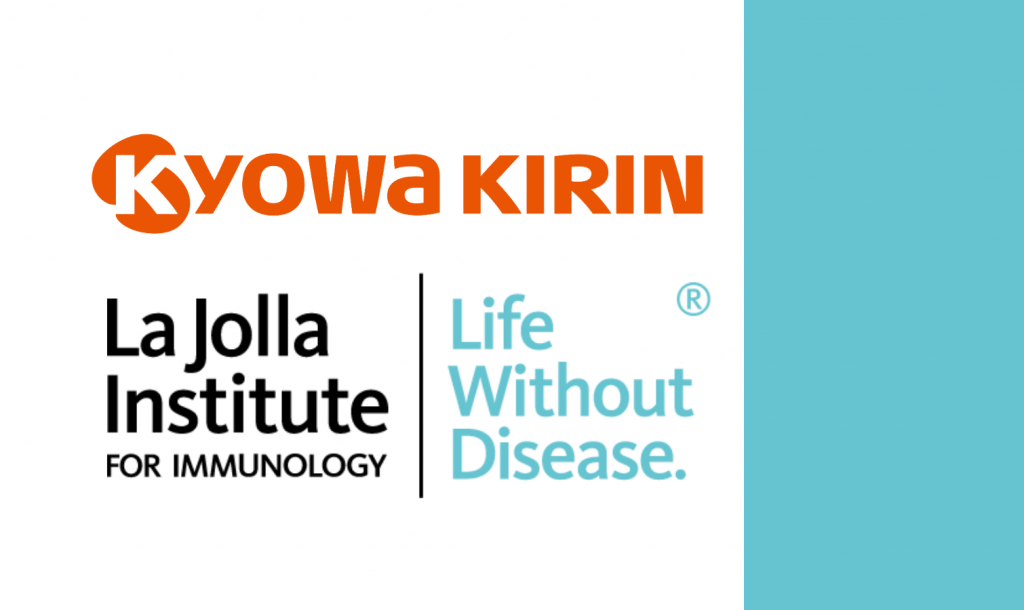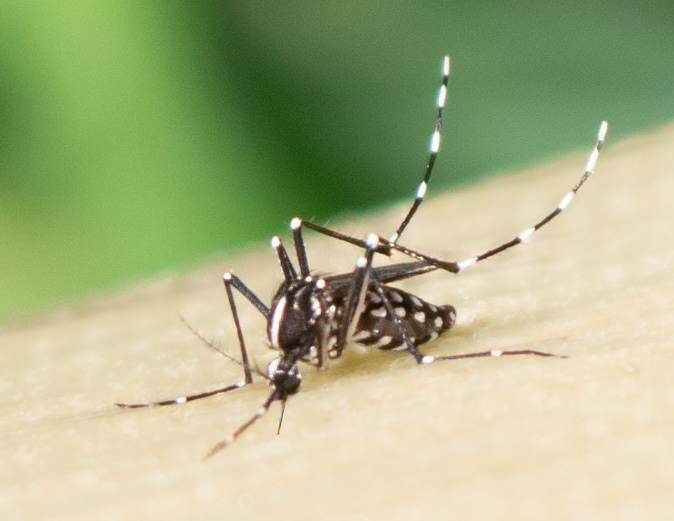T cells are central to almost all immune responses. The CD4 subset is capable of directing B cell responses and humoral immunity, and can modulate the actions of many other cell types including CD8 T cells, dendritic cells, macrophages, eosinophils, and basophils. In addition, the CD8 subset primarily function as cytolytic killers for clearing pathogen-infected cells or for targeting tumors. Both subsets are also central causative agents of autoimmune disease. T cells exert their actions in two ways, either through direct cell-cell contact which involves transmembrane proteins present on both the T cell and interacting cell, or by the secretion of soluble proteins termed cytokines which have receptors on many lymphoid and some non-lymphoid cell types. Infectious agents such as viruses are only cleared efficiently if a strong T cell response is elicited, and cancer cells can also be suppressed if the T cell response is optimized. In contrast, strong T cell responses directed against self-antigens and allergens can also be detrimental and lead to autoimmune diseases such as multiple sclerosis, rheumatoid arthritis, scleroderma, psoriasis, and diabetes, and inflammation such as characterized by allergies, asthma, and atopic dermatitis (eczema).
Our lab has worked on understanding how costimulatory receptors in the TNFR family control the activities of T cells in multiple scenarios. Much of this data and other relevant information can be found in the reviews listed below:
Croft, M. 2003. Costimulation of T cells by OX40, 4-1BB, and CD27. Cytokine and Growth Factor Reviews. 3-4:265.
Croft, M. 2003. Costimulatory members of the TNFR family: Keys to Effective T cell immunity. Nature Reviews Immunology. 3:609.
Croft, M. 2005. The evolving cross-talk between co-stimulatory and co-inhibitory receptors: HVEM-BTLA. Trends in Immunology. 26:292.
Salek-Ardakani, S., and Croft, M. 2006. Regulation of CD4 T cell memory by OX40 (CD134). Vaccine. 24:872.
So, T., Lee, S-W., and Croft, M. 2006. TNF/TNFR family members that positively regulate immunity. International Journal of Hematology. 83:1.
So, T., Lee, S-W., and Croft, M. 2008. Immune regulation and control of regulatory T cells by OX40 and 4-1BB. Cytokine and Growth Factor Reviews. 19:253.
Lee, S-W., and Croft, M. 2009. 4-1BB as a therapeutic target for human disease. In Therapeutic Targets of the TNFR Superfamily. Advances in Experimental Medicine and Biology. 647:120.
Croft, M., T. So, W. Duan, and P. Soroosh. 2009. The significance of OX40 and OX40L to T-cell biology and immune disease. Immunological Reviews. 229:173.
Croft, M. 2009. The role of TNF superfamily members in T-cell function and diseases. Nature Reviews Immunology. 9:271.
Croft, M. 2010. Control of immunity by the TNFR-related molecule OX40 (CD134). Annual Reviews in Immunology. 28:57.
Salek-Ardakani, S., and Croft, M. 2010. TNFR/TNF family members in antiviral CD8 T cell immunity. Journal of Interferon & Cytokine Research. 30:205.
Doherty, T.A., and Croft, M. 2011. The therapeutic potential of targeting TNF/TNFR family members in asthma. Immunotherapy. 3:919.
Croft, M., Duan, W., Choi, H., Eun, S-Y., Madireddi, S., and Mehta, A. 2012. TNF superfamily in inflammatory disease: translating basic insights. Trends in Immunology. 33:144.
So, T., and Croft, M. 2012. Regulation of the PKCθ-NF-κB axis in T lymphocytes by the tumor necrosis factor receptor family member OX40. Frontiers in Immunology. 3:133.
Croft, M., Benedict, C.A., and Ware, C.F. 2013. Clinical targeting of the TNF and TNFR superfamilies. Nature Reviews Drug Discovery. 12:147.
So, T., and Croft, M. 2013. Regulation of PI-3-Kinase and Akt signaling in T lymphocytes and other cells by TNFR family molecules. Frontiers in Immunology. 4:139.
Croft, M. 2014. The TNF family in T cell differentiation and function – Unanswered questions and future directions. Seminars in Immunology. 26:183.
Croft, M., and Siegel, R.M. 2017. Beyond TNF: TNF family cytokines as targets for the treatment of rheumatic diseases. Nature Reviews Rheumatology. 13:217.
Mehta, A.K., Gracias, D.T., and Croft, M. 2018. TNF activity and T cells. Cytokine. 101:14.
Specific examples of control of T cells by TNFR family proteins relate to the molecules OX40 (CD134), 4-1BB (CD137), CD27, HVEM, and CD30. For example, studies of knockout animals made deficient in these molecules or blocking studies with antibody demonstrated that both primary CD4 and CD8 T cell responses and development of memory to protein antigen in adjuvants (e.g. CFA, alum), or to several viruses, or to a range of tumors are strongly controlled by them. Several studies have also suggested that OX40 and 4-1BB signals can directly prevent suppressive activity or the induction of regulatory T cells which further aids the clonal expansion and differentiation of effector T cells. Studies in experimental animal models have now not only stressed the importance of the molecules for autoimmune and inflammatory disease manifestations, but shown that inhibiting these interactions can be useful therapeutically. For example, inhibiting OX40/OX40L interactions can abrogate Th2 or Th1/Th17-induced pathologies in experimental leishmaniasis, multiple sclerosis, graft-versus-host disease, transplantation, inflammatory bowel disease, asthma, atopic dermatitis and arthritis. Agonist reagents that stimulate OX40, 4-1BB, and CD27 also have great potential therapeutically for vaccination, as shown by a number of studies in tumor models or of responses to viruses where the immune response can be boosted dramatically to aid protection. The lab is currently focusing on how OX40 and CD30 drives responses to allergens that link to asthmatic and allergic disease, and how these molecules control allergen-reactive effector and tissue-resident memory T cells. Understanding this is likely to lead to combination therapeutic approaches for allergic disease.
Selected References
Bansal-Pakala, P., Jember, A. G-H, and Croft, M. 2001. Signaling through OX40 (CD134) breaks peripheral T cell tolerance. Nature Medicine. 7:907.
Rogers, P.R., Song, J., Gramaglia, I., Killeen, N., and Croft, M. 2001. OX40 promotes Bcl-xL and Bcl-2 expression and is essential for long-term survival of CD4 T cells. Immunity. 15:445.
Bansal-Pakala, P., and Croft, M. 2002. Defective T cell priming associated with aging can be rescued by signaling through 4-1BB (CD137). Journal of Immunology. 169:5005.
Salek-Ardakani, S., Song, J., Halteman, B.S., Jember, A. G-H., Akiba, H., Yagita, H., and Croft, M. 2003. OX40 (CD134) controls memory T helper 2 cells that drive lung inflammation. Journal of Experimental Medicine. 198:315
Song, J., Salek-Ardakani, S., Rogers, P.R., Cheng, M., Van Parijs, L., and Croft, M. 2004. The costimulation-regulated duration of PKB activation controls T cell longevity. Nature Immunology. 5:150
Song, J., Cheng, M., Tang, X., and Croft, M. 2005. Sustained survivin expression from OX40 costimulatory signals drives T cell clonal expansion. Immunity 22:621.
Song, A., Tang, X., Harms, K.M., and Croft, M. 2005. OX40 and Bcl-xL promote the persistence of CD8 T Cells to recall tumor-associated antigen. Journal of Immunology. 175:3534.
So, T., and Croft, M. 2007. Cutting Edge: OX40 inhibits TGF-β and antigen-driven conversion of naïve CD4 T cells into CD25+Foxp3+ T cells. Journal of Immunology. 179:1427.
Song, A., Song, J., Tang, X., and Croft, M. 2007. Co-operation between CD4 T cells and CD8 T cells for anti-tumor activity is enhanced by OX40 signals. European Journal of Immunology. 37:1224.
Song, J., Salek-Ardakani, S., So, T., and Croft, M. 2007. The kinases aurora B and mTOR regulate the G1-S cell cycle progression of T lymphocytes. Nature Immunology. 8:64.
Salek-Ardakani, S., Moutaftsi, M., Crotty, S., Sette, and Croft, M. 2008. OX40 drives protective vaccinia virus-specific CD8 T cells. Journal of Immunology. 181:7969.
So, T., Soroosh, P., Eun, S-Y., Altman, A., and Croft, M. 2011. An antigen-independent signalosome of CARMA1, PKCθ, and TRAF2 determines NF-κB signaling in T cells. Proceedings of the National Academy of Sciences. 108:2903.
Salek-Ardakani, S., Flynn, R., Arens, R., Yagita, H., Smith, G.L., Borst, J., Schoenberger, S.P., and Croft, M. 2011. The TNFR family members OX40 and CD27 link viral virulence to protective T cell vaccines in mice. Journal of Clinical Investigation. 121:296.
Soroosh, P., Doherty, T.A., So, T., Mehta, A.K., Khorram, N., Norris, P.S., Scheu, S., Pfeffer, K., Ware, C., and Croft, M. 2011. Herpesvirus entry mediator (TNFRSF14) regulates the persistence of T helper memory cell populations. Journal of Experimental Medicine. 208:797.
Salek-Ardakani, S., Moutafsi, M., Sette, A., and Croft, M. 2011. Targeting OX40 promotes lung resident memory CD8 T cell populations that protect against respiratory poxvirus infection. Journal of. Virology. 85:9051.
Lee, S-W., Park, Y, Eun, S-Y., Cheroutre, H., Madireddi, S., and Croft, M. 2012. Cutting Edge: 4-1BB controls regulatory activity in dendritic cells through promoting optimal expression of retinal dehydrogenase. Journal of Immunology. 189:2697.
Boettler, T., Moeckel, F., Cheng, Y., Heeg, M., Salek-Ardakani, S., Crotty, S., Croft, M., and Von Herrath, M. 2012. OX40 facilitates control of a persistent virus infection. PLoS Pathogens. 8:e1002913.
Zhao, Y., Tahiliani, V., Salek-Ardakani, S., and Croft, M. 2012. Targeting 4-1BB (CD137) to enhance CD8 T cell responses with poxviruses and viral antigens. Frontiers in Immunology. 3:332.
Lei, F., Song, J., Haque, R., Haque, M., Xiong, X., Fang, D., Croft, M., and Song, J. 2013. Regulation of A1 by OX40 contributes to CD8+ T cell survival and anti-tumor activity. PLoS One. 8:e70635.
Madireddi, S., Eun, S-Y., Lee, S-W., Nemcovicova, I., Mehta, A.K., Zajonc, D.M., Nishi, N., Niki, T., Hirashima, M., and Croft, M. 2014. Galectin-9 controls the therapeutic activity of 4-1BB-targeting antibodies. Journal of Experimental Medicine. 211:1433.
Mehta, A.K., Duan, W., Doerner, A.M., Traves, S.L., Broide, D.H., Proud, D., Zuraw, B.L., and Croft, M. 2015. Rhinovirus infection interferes with the induction of tolerance to aeroantigens through OX40 ligand, thymic stromal lymphopoietin, and IL-33. Journal of Allergy and Clinical Immunology. 137:278
Eun, S-Y., Lee, S-W., Xu, Y., and Croft, M. 2015. 4-1BB ligand signaling to T cells limits T cell activation. Journal of Immunology. 194:134
Tahiliani, V., Hutchinson, T.E., Abboud, G., Croft, M., and Salek-Ardakani, S. 2017. OX40 co-operates with ICOS to amplify follicular Th cell development and germinal center reactions during infection. Journal of Immunology. 198:218.
Madireddi, S., Eun, S-Y., Mehta, A.K., Birta, A., Zajonc, D.M., Niki, T., Hirashima, M., Podack, E., Schreiber, T., and Croft, M. 2017. Regulatory T cell-mediated suppression of inflammation induced by DR3 signaling is dependent on galectin-9. Journal of Immunology. 199:2721.
Desai, P., Abboud, G., Stanfield, J., Thomas, P.G., Song, J., Ware, C.F., Croft, M., and Salek-Ardakani, S. 2017. HVEM imprints memory potential on effector CD8 T cells required for protective mucosal immunity. Journal of Immunology. 199:2968.
Desai, P., Tahiliani, V., Hutchinson, T.E., Dastmalchi, F., Stanfield, J., Abboud, G., Thomas, P.G., Ware, C.F., Song, J., Croft, M., and Salek-Ardakani, S. 2018. The TNF superfamily molecule LIGHT promotes the generation of circulating and lung-resident memory CD8 T cells following an acute respiratory virus infection. Journal of Immunology. 200:2894.




